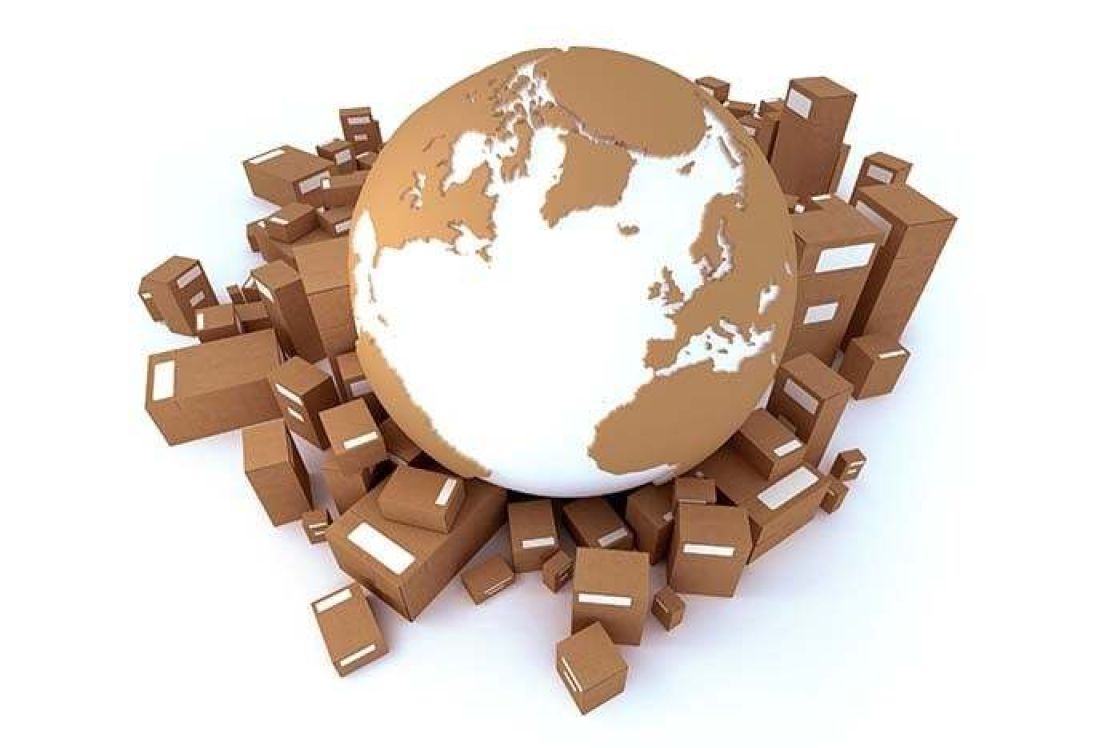Sustainability and E-commerce: what are brands doing to mitigate their impact?
E-commerce was our pandemic saviour. As we were all at home, locked in, isolated and largely detached from almost everything familiar, online shopping allowed us to retain some of our normal-life comforts. Most of us took up new hobbies, indulged in experimental at-home beauty treatments and stocked up on essentials. Almost all of us engaged in some form of ‘ treat yourself’ behaviour to distract ourselves and alleviate the stresses of external disorder and chaos.
What’s more, platforms like Amazon just made it too easy for us. As non-essential stores were forced to close, the convenience of next day delivery programs like Prime and the price competitiveness across the different categories made online shopping easy, accessible and cheap.
These pandemic behaviours greatly accelerated the transformation of traditional retail shopping to e-commerce. As a result, growth of online sales accelerated between five-to-ten years. To put it into perspective, in 2020, this was a 46% increase compared to the previous year- the strongest bout of e-commerce growth since 2008.
The Environmental Impact
Whilst the mass spike in online orders spelled good news for struggling businesses, it also lead to a huge increase in the usage of delivery vehicles and packaging materials like plastic and cardboard: the most detrimental elements of the e-commerce cycle.
Global packaging firm Tetra Pak notes the impact of packaging, citing that:
Only 9% of total plastic is recycled
32% of all plastic packaging ends up in landfill and plastic can take hundreds of years to degrade
Plastic production, fueled by fossil fuels, reached 728,000 metric tonnes in 2021
The increase in online sales inevitably led to an increase in the volume of plastics used in packaging, resulting in an estimated 11,400-17,600 tonnes of additional plastic packaging used by the sector due to COVID-19 from March to September 2020.
In addition to plastic usage, more than two billion trees are now logged every year for cardboard packaging alone. What’s more, most cargo transported via multiple routes including land, sea, and air, the excessive shipping trails are a huge contributor when it comes to CO2 emissions. According to The Economist, suppliers’ operations are responsible for 65% to 95% of a company’s total emissions, highlighting the significant amount of resources used in the packaging and deliveries of online sales.
Sustainable Brands
Despite the huge increase in plastic and cardboard usage, a number of brands have cracked the code when it comes to sustainable e-commerce.
Sports brand Puma looked to create a packaging system that would greatly reduce its environmental footprint and support its initiatives towards a greener future.
The tens of millions of shoes shipped in their new bag will reduce water, energy and diesel consumption on the manufacturing level alone by more than 60% per year.
Another company aiming to curb their carbon emissions is fashion marketplace ASOS. Recognised as a giant in the e-commerce industry, the company has taken on the challenge of mitigating its high volumes of packaging waste. Recently, the company reduced the thickness of its bags; whilst this may not sound significant, the small change will reduce a not-so-small 583 tonnes of plastic annually.
Finally, supermarket behemoth Tesco, has been taking the lead on sustainable packaging choices for UK suppliers.
According to Tesco’s website, “Our 4Rs packaging strategy is to Remove where we can, Reduce where we can’t, Reuse more, and Recycle what’s left.”
Tesco also notes the below targets in place to address its packaging issues:
Tesco-brand paper and cardboard is to be sustainably sourced by March 2021. This goal has now been accomplished. Brands are to meet this goal by the end of 2022.
Last year Tesco had another goal which it reached – to rid a billion pieces of plastic from its portfolio. This year an additional half billion pieces of plastic is to be removed.
Following a successful trial of collection points that allowed customers to return previously unrecycled soft plastic, such as the clear film used to wrap meat and fish, crisp packets, fruit and vegetable bags, and sweets wrappers, Tesco is rolling the soft plastics collection points out to approximately 800 large stores.
All Tesco-label packaging is going to be reusable or recyclable at curbside and/or in large stores in the UK, by the end of this year. Brands aren’t yet held to this target, but Ernshaw said that eventuality is coming.
External targets such as the UK plastic packaging tax for materials that aren’t at least 30% recycled content (which begins in April 2022), and the extended producer responsibility (EPR) program that begins in 2023.
Amazon: moving towards eco-friendly
Amazon is one of the biggest online marketplaces in the world, but that doesn’t stop it from striving to be an eco-friendly brand; the tech giant is involved in a number of different initiatives to help minimise its carbon footprint.
In 2019, Amazon and Global Optimism co-founded The Climate Pledge, a commitment to net-zero carbon by 2040. Since then, a growing list of major companies and organisations have joined The Climate Pledge. These signatories play a critical role in stimulating investment in the development of low-carbon products and services.
Since 2015, the company has reduced the weight of its outbound packaging by 33%, eliminating 915,000 tons of packaging material worldwide, or the equivalent of over 1.6 billion shipping boxes. In 2020 alone, it eliminated over 27 million plastic bags from their device packaging.
As part of the Climate Pledge Friendly, the customer packaging experience team at Amazon partnered with AWS to build a machine learning solution powered by Amazon SageMaker. The primary goal was to make more sustainable packaging decisions, while maintaining high customer experience.
The program helps them use as little material as possible while still protecting items during delivery. Smaller and lighter packages mean Amazon can pack more orders into each delivery, resulting in fewer trips and less fuel burned— all of which minimise their carbon footprint.
Amazon also provides options for their customers to reuse, repair, and recycle their products—sending less material to the landfill and more back into the circular economy loop. The initiative known as Amazon Second Chance provides information on how to trade in eligible items, recycle Amazon devices and products, recycle Amazon packaging, and how to find refurbished products and devices.
Finally, Amazon recently partnered with trusted third-party certifications and created its own certification, the Compact by Design. Part of the Climate Pledge Friendly initiative, Compact by Design helps customers recognise sustainable businesses from non-sustainable ones, encouraging brands to get on board with sustainable packaging by recognising their efforts on their PDP pages.
The Compact by Design certification identifies products that, while they may not always look very different, have a more efficient design. With the removal of excess air and water, products require less packaging and become more efficient to ship. At scale, these small differences in product size and weight lead to significant carbon emission reductions.
Conclusion
Sustainability is on the agenda and it is here to stay. Large businesses like Amazon, ASOS and Tesco are raising the bar and setting an example to other brands by showing them what sustainable business practices look like. As players in the e-commerce ecosystem, brands have a duty to ensure that they are helping reduce the amount of waste generated by e-commerce sales. As consumers increasingly look to brands to lead in this space, brands must take meaningful action and consider external concerns as well as their bottom line.



